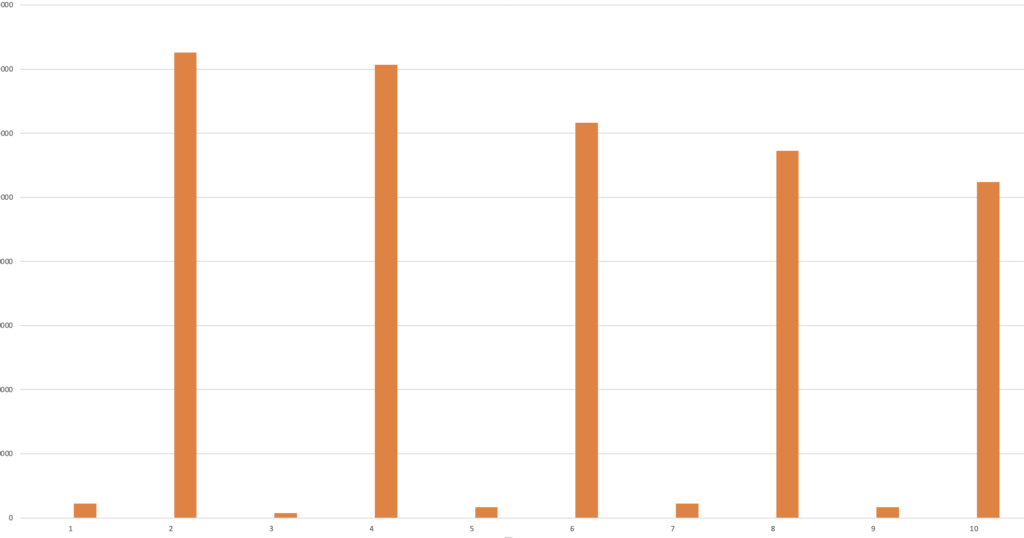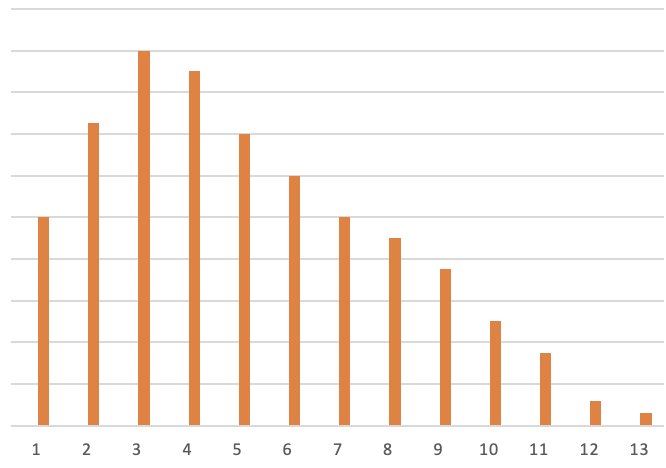In one of my previus posts about cognitive biases I mentioned the Occam’s razor principle.
When it comes to data insights this is sometimes a very useful principle to keep in mind because data does’nt give insights itself but we are always asked to give our interpretation to the data, finding explenations to sometimes odd and yet very specific patterns.
A few years ago i was managing the tecnical implementation of the Analytics platform for an italian customer. After a few days i run a distribution frequency analysis to check how many users viewed 1 page in the visit, how many 2, how many 3 and so on. The result was somewhat puzzling:
Basically there is a very small number of visitors (x axis) that have seen 1 page, a big number have seen 2, a small number 3, a big number 4 and so on. The standard distribution would normally look like this (depending on the market vertical there also might be a decrease with the max value being found at 1 page view per visit – aka bounce visits).
There are two main possible explenations (among others of course).
1 – For some reason all the website’s users browse always an even number of pages in their session, regardless of their used device, browser, visit source. It looks like they all agreed to open an even number of pages during their visit.
2 – The website has a wrong implementation, firing two page impression events on every page, thus the numbers are simply doubled.
Which one of the two explenations above is the most simple one and therefore tends to be the correct explenation?
More recently i came across a similar problem: the tracking of a website was implemented alongside the cookie banner which was programmed in a way that it would fire an additional page impression event, with the result that on the first page opened the user’s browser was in fact sending two page impression records. As an evidence the overall bounce rate of the website was 2.x percent (very few visitors only saw 1 page impression in their visit).. very statistically unlikely. Is it more probable that all users of the website are really viewing more then 1 page in their visit, or is it likely that there is something wrong with the tracking implementation? Occam’s principle is always the answer! Happy analysis everyone!


